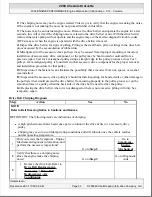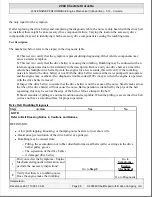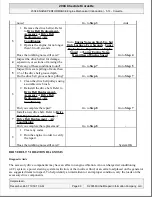
applications, the flywheel, clutch, and pressure plate is also a balanced assembly. During the powertrain build
process, balance weights may be added to the crankshaft balancer and/or flywheel as required.
In order to maintain engine/clutch assembly balance, it may be necessary to install or remove balance weights
as detailed below:
Crankshaft Balancer
z
Existing balancer onto existing engine:
The balancer position must be marked prior to removal and installed to the original position. Refer to
Crankshaft Balancer Removal
.
z
New balancer onto an existing engine:
Install the same size balance weights into the new balancer in the same location as the old component.
Refer to
Crankshaft Balancer Cleaning and Inspection
.
Engine Flywheel
z
Existing flywheel, clutch, and pressure plate assembly onto the existing engine:
Flywheel position must be marked prior to removal and installed to the original position. Refer to
Engine
Flywheel Removal
.
z
Existing flywheel, clutch, and pressure plate onto a new engine:
Remove balance weights, if applicable from the flywheel.
z
New flywheel, clutch, and pressure plate assembly onto an existing engine:
Do not transfer or install balance weights.
z
New flywheel, clutch, and pressure plate assembly onto a new engine:
Do not install balance weights.
CYLINDER LEAKAGE TEST
IMPORTANT: The flywheel, clutch, and pressure plate are a balanced assembly and are not
available as individual components. The pressure plate mounts or locates onto
the flywheel via two dowel pins in the flywheel. If the pressure plate is not
aligned properly onto the dowel pins and tightened down, the pins may bend
and the plate may be incorrectly positioned which will effect component
balance. Refer to Clutch Assembly Replacement .
2004 Chevrolet Corvette
2004 ENGINE PERFORMANCE Engine Mechanical (Introduction) - 5.7L - Corvette
Helpmelearn
December-24-07 10:50:09 AM
Page 54
© 2005 Mitchell Repair Information Company, LLC.
















































